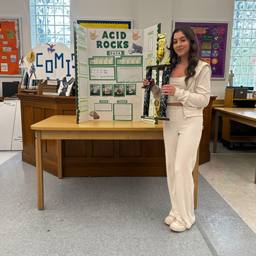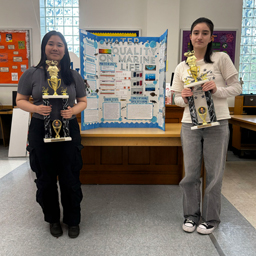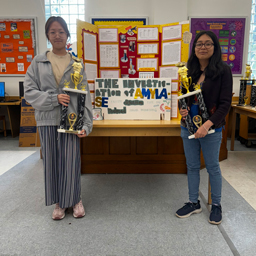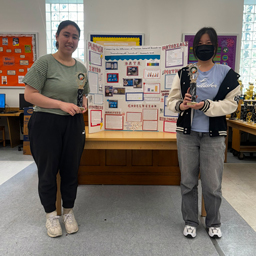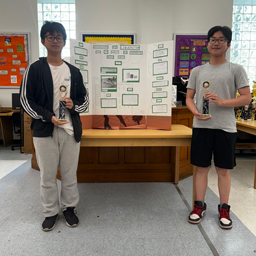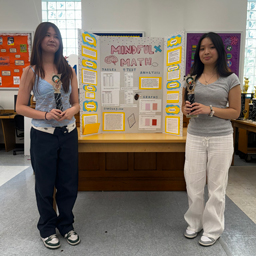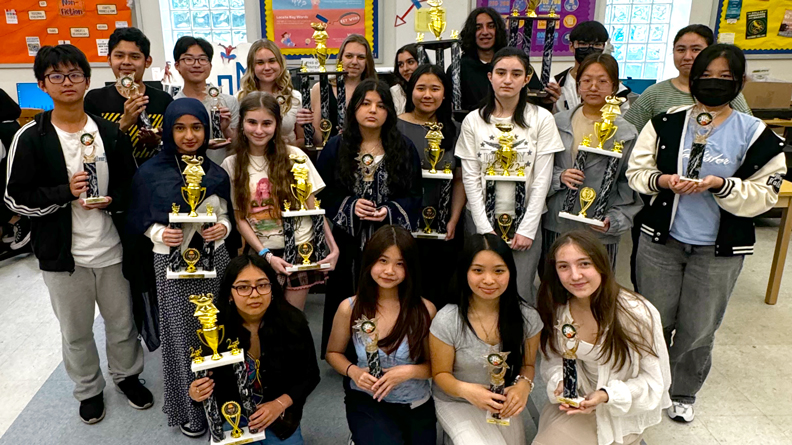Sukhdeep Kaur ‘25, working alongside Dr. Shaneen Singh at Brooklyn College Cancer Center and Ms. Susan Katzoff, is taking on groundbreaking protein research to combat cancerous mutations found in breast cancer.
Kaur's research, titled "CUL2 and BRCA1 Interactions Through PRAME in NCL," studies how BRCA1 (Breast Cancer Gene 1) aids in DNA repair and stops cells from multiplying and dividing too swiftly — something that can lead to cancer. Kaur is trying to target PRAME, a harmful protein that prevents the body from getting rid of abnormal or unneeded cells, and NCL (nucleolin), another protein that is overexpressed in breast cancer tissue.
She initially concentrated on investigating how BRCA1 and CUL2 (a protein that helps prevent uncontrolled cell proliferation) interacted. However, in the lab, she quickly discovered that BRCA1 and CUL2 did not directly interact. Through mapping, literature analysis, and studying the proteins' subnetworks, she discovered that they interacted through PRAME, so she expanded her research.

Ms. Katzoff and Sukhdeep Kaur '25 display a model of Kaur's research. Photo: Nathanaelle Joseph and Han Xin Ou Yang
Kaur's inspiration for this project comes from her teachers and family members. "My grandma had breast cancer, so it was nice to understand what she experienced on a molecular level," Kaur said. "There is not much treatment related to cancer, and even less when it comes to women's health."
"I would also like to shout out Mr. [Glenn] Elert, who got me into the lab," she added. "He inspired me to keep doing research and carry it into senior year."
Her project has used many bioinformatic tools and literature resources to help model the docking proteins. Currently, Kaur has found a model of PRAME that she is using to try and dock it with CUL2 to find the interactors.
Kaur meets with her Brooklyn College professors once a week over Zoom to discuss the project and formulate questions.
"Initially, walking in and being with graduate students and undergraduates was overwhelming," Kaur said. "But now I've gotten the hang of it."
As Kaur furthers her education, she hopes to "expand her research to greater heights" by working with experienced professionals in pharmaceuticals and therapeutic treatments.
Kaur is a part of the Midwood Science Research Program, a three year course offered to Medical Science students, preparing them to design and conduct experiments from their sophomore year on. They also learn real world skills such as writing cover letters and contacting college professors.
"Inquiry investigations, writing resumes, writing scientific research proposals, and designing procedures for experimentation are all paramount to success in the Midwood Science Research Program," said Ms. Katzoff.
Ms Katzoff has been teaching research at Midwood for seven years She took over Mr. Elert's workload upon his retirement in September. "When I took on Sukhdeep, she was at the data collection and analysis stage of her project," said Ms. Katzoff. "We primarily discussed the output that she was getting from databases and creating the PRAME protein."
Throughout the duration of her project, Kaur has faced many setbacks. "It can be challenging to find accurate information when using many models and data," she said. "One program might deviate from the others a lot, so it is hard to come to a consensus on what might accurately reflect the model."
Kaur is taking AP Biology and was able to apply concepts like DNA replication and genetic information from her class to her research.
"It is an honor and a privilege to learn new information from students," said Ms. Katzoff. "And it's very rewarding to work with research students because they become the experts in the field, and the direction of learning shifts."
Kaur will soon display her project for the first time in the Junior Science and Humanities Symposium (JSHS) and Regeneron Science Talent Search (STS).
"Ms. Katzoff has been really motivating me to meet the deadlines for all competitions and to continue the second round of experiments," said Kaur.
To aspiring researchers, Ms. Katzoff said, "Follow your heart and choose a topic you're passionate about so that your project has the force to be successful in this program and in life."
Kaur added, "Science is always about questioning, so keep questioning everything you see."
Written by Nathanaelle Joseph and Han Xin Ou Yang (Class of 2025)
This article originally appeared in the online version of Argus on December 13, 2024.



